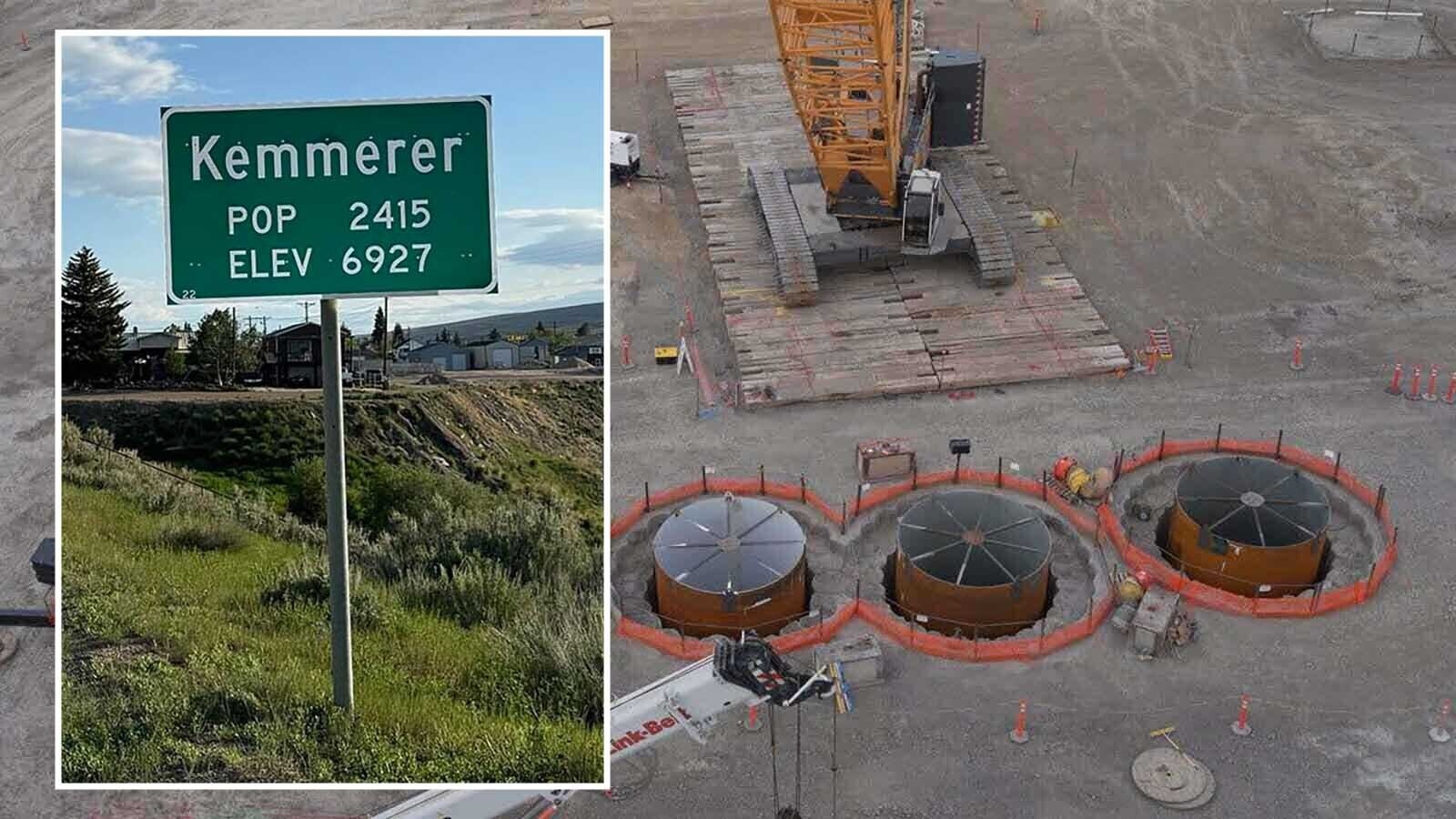Solar developers in Montana are backing legislation they say unleashes private investment and lowers residential electric bills, a debate over solar that mirrors what just unfolded in Cheyenne.
Wyoming lawmakers considered legislation to support individual and community solar projects, but a bill from Rep. Scott Heiner, R-Green River, died over opposition to net metering amendments.
Net metering is a billing arrangement where excess electricity generated by person’s renewable energy system feeds back into the grid, earning credits on utility bills.
Shared solar systems grant credits to the system’s subscribers for their portion of the power produced by a shared renewable system, like a community solar array.
In addition to killing Heiner’s bill, the Wyoming Legislature also passed a resolution favoring fossil fuels over solar.
Gov. Mark Gordon signed Senate Resolution 4, which requests the governor “concentrate on promoting 'clean coal, natural gas, uranium and hydroelectric … from Wyoming in lieu of taxpayer subsidized commercial wind and solar generated power.'”
Wyoming-Montana Solar Bright Spots
Lower Valley Energy announced March 17 it’s launching a community solar project in Star Valley in western Wyoming.
“This small-scale, locally owned project will provide a stable, long-term source of energy while ensuring minimal impact on agriculture, wildlife, and the rural character of the valley,” according to a statement from Lower Valley Energy.
Projects like the one planned for Star Valley are the focus of current legislation in Montana.
The Montana Solar Shares Act was recently described by its sponsor, state Sen. Chris Pope, D-Bozeman, as “a happy bill.” But it remains tied up in committee with an unclear path forward.
Last week, Pope assured members of the Montana House Energy, Technology and Federal Relations Committee that his Senate Bill 188, “Advances a very proven, affordable grid scale solar electric generation application new to the Treasure State if this bill should pass.
“It's carefully designed to unlock significant private investment for innovative, made-in-Montana electric generation that provides consumers with energy independence and potentially lower power bills,” added Pope. “SB 188 unleashes private investment. It does not subsidize anything, and it does not create cost for ratepayers, and it requires no public funding.”

How It Works
When a homeowner installs solar panels on their home, they remain hooked up to the electric power grid provided by a major utility, like Rocky Mountain Power or NorthWestern Energy.
Those solar panels powering a single-family home offset the homeowner’s power bill. In the winter, when solar panels generate less, the homeowner might rely on the electric utility for more power.
But during sunny months, power generation swings the other way, with the solar panels replacing the power provided by the utility. So, a homeowner’s electric bill in February might be $300, while in July it drops down to $3.
The Montana Solar Shares Act aspires to bring these kinds of savings to homeowners who cannot afford to install their own residential solar array. It also serves renters and anyone with a home lacking good sun exposure.
Under the Solar Shares Act, a ranch, subdivision or municipality could build a 5-megawatt system and then sell subscriptions to individual electricity consumers. Instead of drawing power from panels on their roof, subscribing homeowners would tap into power from the community’s array.
The Solar Shares Act instructs the Montana Public Service Commission to establish a credit system that compensates individual power subscribers on their utility bill. That way, the solar generated by a community array offsets charges just like solar panels on a single-family home.
“Each project has multiple subscribers who buy the energy and receive a credit on their electricity bill for their portion of the power produced,” said Matthew Hargarten, VP of government and public affairs at the Coalition for Community Solar Access (CCSA).
In his testimony in support of the Solar Shares Act, Hargarten said the process of subscribing to a community solar service “is as easy as signing up for Netflix. And subscriptions can be easily changed or canceled.”
Opposition From Established Utilities
“Utilities will often oppose these types of customer-driven, distributed energy projects because they threaten their shareholder profits,” Hargarten said.
Two major utilities testified against the bill last week, Montana-Dakota Utilities and NorthWestern Energy.
Alan Olson, director of government affairs for NorthWestern Energy, told the committee the Solar Shares Act doesn’t share the financial burden placed on utilities.
Olson said that to cooperate with independent community solar power providers, NorthWestern Energy would have to buy software that costs $250,000.
“Who ultimately pays for that?” asked Olson. “The ratepayer.”
“This will put additional strain on the utility having to track everything,” said Olson.
Repeating a point raised by other proponents of the Solar Shares Act, Hargarten pointed to successful shared solar programs in other states.
“The utilities in those 20 other states have figured out how to do this paperwork,” said Hargarten. “I'm confident that the utilities here in Montana can also figure that out.”
Under net metering rules in Montana, any excess credits generated by solar panels are forfeited to the utility.
“With solar shares, customers are credited for their portion of the power production and benefit from economies of scale,” Makenna Sellers, executive director of the Montana Renewable Energy Association, told Cowboy State Daily Tuesday.
“Net metering is like building a company,” said Sellers. “Solar shares is like investing as a shareholder in the stock market.”
NorthWestern Energy Spokesperson Jo Dee Black told Cowboy State Daily the utility supports people interested in community solar.
“We’ve worked with a coalition of Montana communities exploring how such projects may contribute to their community carbon reduction goals,” said Black, who returned to the utility’s belief that “rates for each customer class should reflect the cost to serve that customer class.”
David Madison can be reached at david@cowboystatedaily.com.





